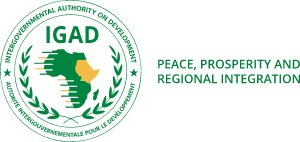The Intergovernmental Authority on Development (IGAD)

Introduction
The purpose of this strategy, the “IGAD Regional Strategy and Implementation Plan 2016-2020”, is to provide a strategic and integrated framework for regional cooperation in the IGAD priority areas of intervention. The IGAD secretariat has facilitated the development of the Strategy as part of its core role. The Strategy is based on best knowledge at time of writing, as well as on previous and existing work, and has been developed in consultation member states, development partners and non-state actors. It is a whole-of-region and multi-stakeholder Strategy intended to provide a focus for regional cooperation and to improve integration and coordination of planning and activities, particularly between sectors and across geographical boundaries. The Strategy is intended to guide existing and forthcoming plans relevant to regional cooperation and to improve integration, and strategies that are region-wide in scope.
IGAD: Its History and Development
The Intergovernmental Authority on Development (IGAD) in Eastern Africa was created in 1996 to supersede the Intergovernmental Authority on Drought and Development (IGADD) which was founded in 1986 to mitigate the effects of the recurring severe droughts and other natural disasters that resulted in widespread famine, ecological degradation and economic hardship in the region. Djibouti, Ethiopia, Kenya, Somalia, Sudan and Uganda – took action through the United Nations to establish the intergovernmental body for development and drought control in their region. Eritrea became the seventh member after attaining independence in 1993 and in 2011 South Sudan joined IGAD as the eighth member state.
